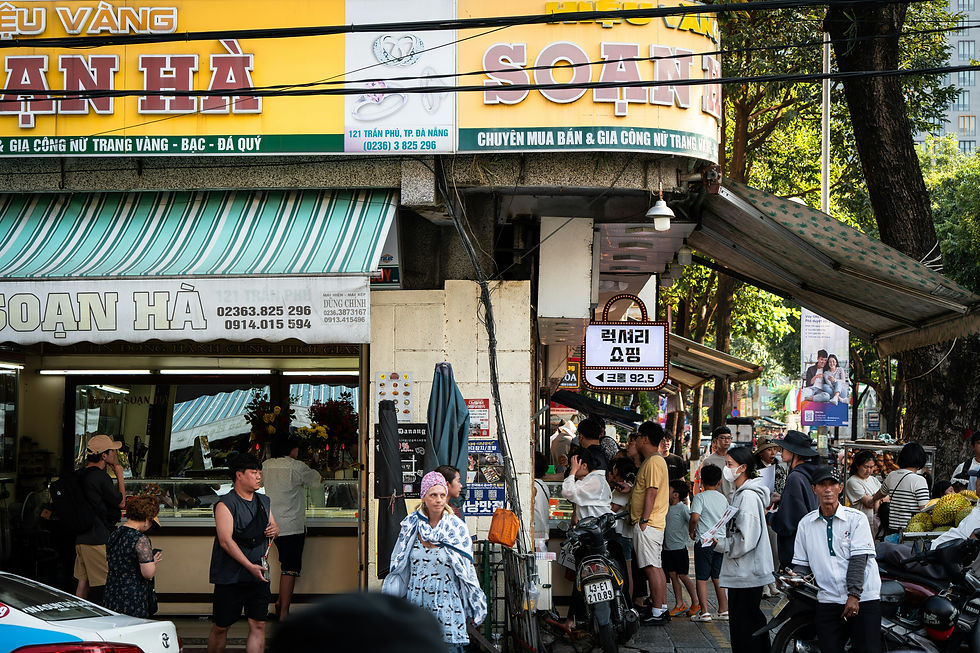Tourism Peaks and the Hidden Boost for Community Businesses
- Glenn Allyn
- Sep 8, 2025
- 6 min read

Seasonal tourist waves act as one of the most significant drivers of economic transformation for local communities. When peak seasons arrive, the entire rhythm of towns and cities changes. Hotels, often operating at modest capacity during quieter months, suddenly find themselves fully booked. Restaurants extend their hours and expand their menus to cater to the flood of hungry guests, while retail shops bustle with visitors eager to purchase souvenirs, clothing, and regional specialties. For many business owners, this influx of income during seasonal peaks provides the financial stability they need to survive throughout the year.
The impact of seasonal tourism extends across industries that are not always immediately visible. Farmers supplying produce to restaurants see their orders multiply, while fishermen provide larger catches to meet increased demand for seafood. Local breweries, wineries, and distilleries thrive as visitors seek authentic tastes of the region. Artisans and craftspeople selling pottery, jewelry, or textiles find new markets for their goods among tourists eager to take home a piece of local culture. Transportation providers, including taxi drivers, car rental companies, and bicycle hire operators, are also experiencing a boom in business. Even support services like electricians, repair technicians, and cleaners benefit, as hotels and restaurants require constant maintenance during busy months. Local governments collect higher tax revenues, allowing them to reinvest in infrastructure projects, cultural programs, and community development. In this way, the economic influence of seasonal visitors is not confined to front-line businesses. Still, it spreads throughout the community, creating growth that lasts far beyond the peak season itself.
Expanding Employment and Developing Workforce Skills
Job creation is the most immediate and visible effect of seasonal tourist surges. Businesses across hospitality, retail, and transportation expand their staffing significantly during peak months. Hotels recruit additional receptionists, concierge staff, and housekeeping teams. Restaurants bring in extra chefs, servers, and bartenders to cope with crowded dining rooms. Shops hire temporary clerks, cashiers, and inventory managers. Tour operators add guides, drivers, and customer service representatives to handle larger groups.
These seasonal jobs are vital for many households. Students rely on summer or holiday jobs to gain income during school breaks. Retirees take on part-time work to stay active and supplement their pensions. Residents use seasonal employment as an additional source of income to support their families. In communities where year-round employment opportunities are limited, the jobs created by tourism act as an essential economic lifeline.
The impact goes far beyond wages. Seasonal employment also provides training that builds valuable skills. Workers learn communication, teamwork, and customer service. They develop adaptability and problem-solving abilities by navigating fast-paced environments filled with international visitors. Language skills improve as employees interact with guests from different cultural backgrounds. Many workers who begin in seasonal roles find pathways to long-term careers. A server in a busy restaurant may become a manager, or a tour guide may eventually establish their own company. By expanding employment and fostering skill development, seasonal tourism strengthens the capacity of local workforces and builds long-term resilience in communities.
Cultural Preservation and Local Identity
Seasonal tourism also reinforces culture and identity by creating demand for authenticity. Visitors often seek experiences that go beyond sightseeing, preferring to immerse themselves in local traditions, crafts, and cuisine. This creates opportunities for artisans, farmers, and cultural organizations to showcase their heritage to a global audience. Local markets thrive as tourists buy handcrafted items such as jewelry, woven textiles, ceramics, and paintings. Musicians, dancers, and storytellers perform for eager audiences, creating memorable connections between visitors and the community’s cultural fabric.
Food culture plays a vital role in this exchange. Restaurants highlight regional dishes, sourcing ingredients locally to ensure freshness and authenticity. Culinary tours, cooking classes, and food festivals provide immersive experiences that combine taste with tradition. Seasonal festivals timed to coincide with tourist peaks often become major cultural showcases, featuring music, dance, art, and rituals that both entertain and educate. These events generate income while reinforcing pride among locals.
The financial validation from tourism ensures that cultural practices remain relevant. Younger generations, seeing that traditions such as weaving, carving, or folk performance can generate income, are motivated to learn and continue them. Heritage that might otherwise fade becomes revitalized. Seasonal tourist waves thus create a cycle where culture is celebrated, preserved, and sustained both socially and economically.
Infrastructure Development and Entrepreneurial Innovation
The influx of seasonal visitors places pressure on infrastructure, encouraging both governments and businesses to invest in improvements. Roads are widened or repaired to accommodate increased traffic. Airports are modernized to handle more passengers. Public transport systems are expanded, while sanitation and waste management are upgraded. Parks, beaches, and historic landmarks receive new funding and maintenance. These investments benefit not only tourists but also residents, improving daily life in communities long after the season ends.
At the same time, businesses seize the opportunity to innovate. Hotels are updating their facilities, adopting digital booking platforms, and introducing eco-friendly practices. Restaurants redesign menus, often blending traditional recipes with international flavors to attract diverse customers. Retailers expand their product lines and establish online stores to reach customers even after they return home. Entrepreneurs launch new ventures such as eco-tours, wellness retreats, and cultural workshops that cater to evolving traveler interests.
Collaboration often emerges as a central strategy. Hotels partner with tour companies and restaurants to create package deals. Artisans and retailers join forces to host seasonal fairs, showcasing local products collectively. These cooperative efforts enhance the visitor experience and ensure that prosperity is distributed across multiple sectors. Seasonal waves of tourism, therefore, act as catalysts for innovation, pushing businesses and governments alike to improve and evolve continually.
Addressing Challenges and Building Sustainability
While seasonal tourism generates prosperity, it also presents challenges that communities must address. The dependence on peak visitor numbers creates economic vulnerabilities during the off-season. Hotels face vacancies, restaurants cut staff, and shops experience reduced sales. Communities that rely too heavily on seasonal peaks risk instability if external factors such as global crises, climate events, or political changes reduce travel demand.
To reduce these risks, diversification strategies are crucial. Hotels promote themselves as venues for weddings, conferences, and retreats outside tourist seasons. Restaurants develop delivery services and special promotions aimed at locals. Shops expand into online sales, creating steady income from global customers. Communities design off-season events such as cultural festivals, wellness programs, and adventure sports to encourage visitors year-round.
Sustainability is another key challenge. Large waves of visitors can strain ecosystems, deplete resources, and overwhelm infrastructure. Businesses and governments increasingly adopt eco-friendly practices such as recycling, renewable energy use, and water conservation. Partnerships with conservation organizations ensure that tourism protects, rather than harms, the environment.
Social sustainability is equally important. Heavy tourist traffic can disrupt local life, inflate housing prices, or dilute traditions. Communities that succeed are those that balance resident needs with visitor expectations, ensuring inclusivity and protecting authenticity. Tourism becomes sustainable when it strengthens both economic growth and community well-being.
Community Unity and Shared Prosperity
One of the most enduring benefits of seasonal tourism is the sense of collaboration it fosters within communities. Businesses often recognize that success is interconnected, and they work together to create better experiences for visitors. Hotels, restaurants, and tour operators develop joint packages that provide tourists with seamless journeys. Artisans, shop owners, and cultural groups organize markets and festivals that showcase creativity and attract both locals and visitors. Chambers of commerce and business associations coordinate strategies to maximize the impact of seasonal peaks.
The prosperity generated during these months extends beyond private businesses. Tax revenues fund public projects such as cultural centers, recreational spaces, schools, and healthcare facilities. Roads are improved, parks are maintained, and community spaces are beautified. These improvements create better living conditions for residents while enhancing visitor satisfaction.
The shared success strengthens pride and unity. Residents see themselves as cultural ambassadors, hosting visitors and sharing traditions. Tourists leave with positive impressions of warm, vibrant communities, often returning for repeat visits or recommending destinations to others. The growing reputation of a destination attracts outside investors, creating more opportunities for long-term growth.
Seasonal waves of tourism are therefore more than temporary boosts in spending. They reshape economies, expand employment, preserve culture, drive innovation, and build community unity. When managed responsibly with sustainability and inclusivity, they provide a foundation for long-lasting prosperity, ensuring that both residents and visitors benefit from the dynamic exchange of culture, commerce, and connection.



Comments